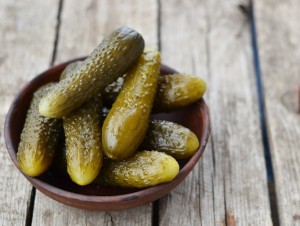Lose Weight > Common Sense To Lose Weight > Common Sense Article > The Benefits Of Therapeutic Massage For Athletes
The Benefits Of Therapeutic Massage For Athletes
Types of sports massage:
Warm-up
A warm-up or pre-event massage is a more vigorous, relatively brief and quick-paced treatment with the aim of warming up the athlete's muscles in preparation for a sporting event or training session. This is beneficial in that it increases the athlete's range of motion, assists circulation, stimulates the production of joint fluid and generally loosens up the body. A warm-up massage will usually avoid deep tissue work, which requires slow movements and more time, though some practitioners' techniques will vary. A pre-event sports massage should be a physically invigorating, refreshing experience, yet it can also have the benefit of assisting the athlete's mental relaxation and focus.
Cool-down
A cool-down or post-event massage means a massage that takes place within 48 hours of an event or training session and is generally to aid the body in its recovery process from strain, exertion or possible injuries. It is important to note that massage should not be applied directly to injured areas at the acute stage (within the first 72 hours of an injury taking place). An injured athlete could still receive a post-event massage, but the injured area should not be worked on until inflammation, pain and swelling have sufficiently diminished, unless a particular first aid technique is being applied, i.e. massage with ice.
Maintenance massage
Regular sports massage is massage with the aim of maintaining and improving the physical health, performance and over-all wellness of the athlete. This includes promoting good circulation, lymphatic drainage, improving muscle tone and specific injury-related benefits such as the softening of scar tissue. Stretching to increase range of motion and deep tissue work are techniques that would normally take place as part of a maintenance massage. Massage also helps to relieve pain, causes the relief of endorphins and promotes relaxation, all of which are beneficial to the athlete's wellbeing.
For more information about sports massage and injury, please refer to the article entitled "Massage and the Treatment of Sports Injuries".
A run down of the benefits of sports massage
Maintaining and increasing good muscle tone
Increasing and maintaining flexibility and range of motion
Prevention and treatment of injuries
Aiding and speeding up the recovery process
Improving athletic performance
Prolonging the athlete's career
Encouraging body awareness
Promoting good blood circulation
Aiding lymphatic drainage
Assisting the body in the removal of lactic acid build-up
Softening scar tissue and making it more elastic
Reducing stress and encouraging relaxation
Releasing endorphins
Related Articles
-
Amazing Weight Loss Pills!
Amazing weight loss pills: Are they real
-
Lose Weight Fast Naturally With Easy Dieting
You can lose weight fast and easy, and I will also show you a way to e
-
Weight Loss Tips - Right ways to Lose Weight
If you are really worried about your in
-
The Dangers of Crash Dieting
Perhaps in your thinking of losing weigh
-
Bringing Some Variety to Your Treadmill Routine
When you are exercising on a treadmill,
-
We Are Programmed To Resist Weight Loss
Losing Weight Research confirming the human body is designed to strong
- DON'T MISS
- Not Losing Weight? These May Be the Reasons Why
- Will I see the exact same weight great loss results with walking rather than jogging?The way to program walking for pounds reduction?
- How To Blast Away Your Weight Loss Barriers
- Helpful Weight Loss Tips for Teens
- Fast Easy Weight Loss Steps That Everyone Can Use
- Weight loss diet as well as Training
- Diet Solution Review
- 7 Healthy Ways to Shed Pounds Fast
- Fat Future
- Weight Loss Are You Determined Enough To Succeed




